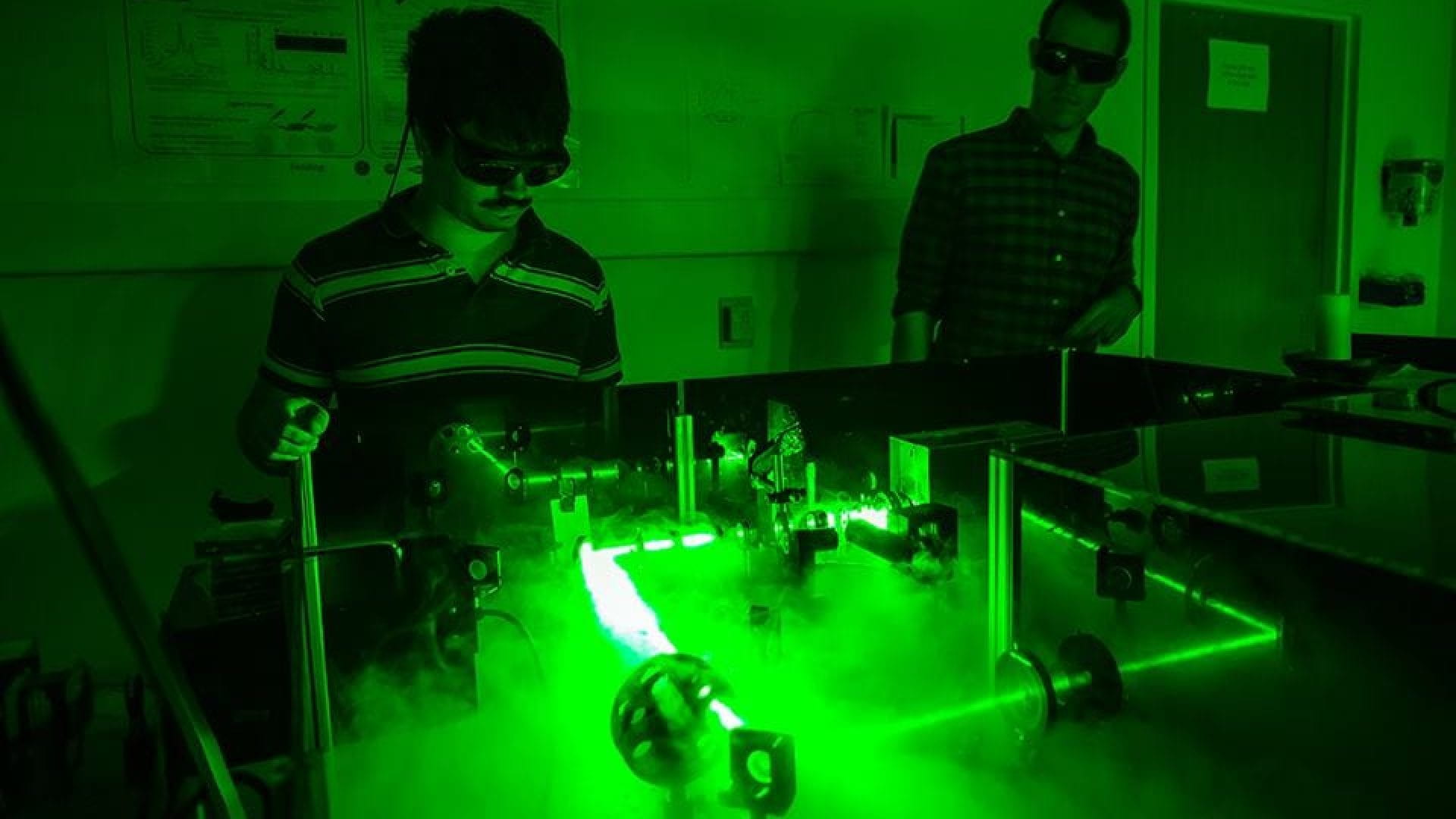Exciton Dynamics in 2D Transition Metal Dichalcogenides (TMDs)
Transition metal dichalcogenides (TMDs) figure prominently in the search for ultrathin semiconductors that could enable the formation of transistors smaller than the current dimensional limits of 3D semiconductors such as silicon. Many TMD applications require the ability to tune the optical, electronic, and transport properties of the TMD layer via controlled doping methods. Toward this, our lab focuses on understanding the influence of substitutional doping on the structural and electronic properties of TMDs. However, these materials are prone to the formation of defects, such as chalcogen vacancies, which alter the optoelectronic properties of the material. These defects can also strongly interact with substitutionally introduced dopant atoms. Therefore, understanding and controlling the interactions between the dopant atoms and defects in TMDs may provide a framework for understanding the chemical reactivity and growth conditions needed to optimize TMDs for next-generation electronic and photonic applications. We apply photoluminescence and transient absorption spectroscopy, to better understand how exciton dynamics are affected by dopants and defects in substitutionally doped TMDs. By correlating these findings with field effect transistor device measurements and atomic-scale scanning transmission electron microscopy (STEM) imaging, we enhance our understanding of how dopant-defect interactions influence the optoelectronic properties of TMDs.

Organic Photovoltaics
Using nanosecond time-resolved infrared spectroscopy (ns-TRIR), we study the decay kinetics of free polarons in organic blend films targeted for next-generation photovoltaic applications. Specifically, investigating PBDB-T: IDT-NDIH-C8 blend films, optical excitation at 532 nm with 9 µJ cm−2 intensity is employed. Both unannealed and annealed films exhibit similar transient absorption spectra in the mid-IR range. The study measures polaron decay kinetics before and after annealing, utilizing a multiple trapping model, revealing significant changes in α values, indicating trap state depth. After annealing, the increased crystallinity and optimized morphology lead to shallower traps, resulting in improved carrier transport properties. The faster polaron absorption decay kinetics in annealed films with higher α values suggest enhanced transport, making them more suitable for harvesting in photovoltaic devices.

Quantum Dot Vibrational Spectroscopy and Excited-State Dynamics
Nanocrystal-ligand boundaries control the primary energy and charge transfer processes that underpin the photocatalytic and photochemical transformations that occur at nanocrystal surfaces. Using time- resolved ultrafast transient absorption spectroscopy, we can begin to understand the influence that ligand structure has on nanocrystal surfaces and the resulting effect on their excited state surface chemistries. In the case of carboxylate- passivated quantum dots (QDs), we can use the distinct vibrational frequencies of surface-bonded carboxylate groups to directly probe their interactions with QD surfaces as well as with any surface charges localized at the nanocrystal-ligand boundaries. The ability to investigate surface charge distributions and molecular dynamics through their interactions with the ligands of excited QDs provides the opportunity to explore how the nanocrystal-ligand boundary can be understood and controlled for the design of QD architectures that most effectively drive charge transfer processes in solar energy harvesting and photoredox catalysis applications.
Ligands have two competing yet equally important roles: they mediate the charge and energy transfer processes that occur in the excited state by allowing molecules to diffuse close to QD surfaces, but they also provide protection from photodegradation. There is a need to balance both ligand functions to increase photocatalytic activity while maintaining QD protection. It was found in a study done in 2020 by the Asbury group that Carboxylate ligands undergo significant changes in bonding geometry when attached to Pb2+surfaces in photoexcited oleate-passivated PbS QDs1. This discovery suggests the ability to tune the nanocrystal- ligand boundaries in QDs to allow for increased charge transfer in photoexcited QDs while maintaining QD protection. To further investigate how different ligands behave in the excited state when attached to metal chalcogenide surfaces, we are currently investigating carboxylate- passivated CdSe films and solutions as well as CdSe/CdS core-shell heterostructures to observe how excited state induced changes can control surface mobility of ligands and affect the molecular dynamics at QD surfaces.

Characterizing Electrocatalytic Intermediates
The goal of our project is to characterize the reaction intermediates and elucidating the mechanisms in the electrochemical reactions such as the nitrogen reduction reaction and the carbon dioxide reduction reaction. We perform in-situ measurements using Attenuated Total Reflectance Infrared Spectroscopy (ATR-SEIRAS) to characterize surface-adsorbed molecular species on electrode surfaces. With our homemade ATR-SEIRAS setup, we are able to apply voltages and measure infrared spectra simultaneously. ATR-SEIRAS has much higher sensitivity compared to traditional vibrational spectroscopy because of metal nanofilm samples and low penetration depth of evanescent waves. We use ATR-SEIRAS to study catalyst surfaces of metal nanoparticles, supported nanoparticles and bulk metal films.

